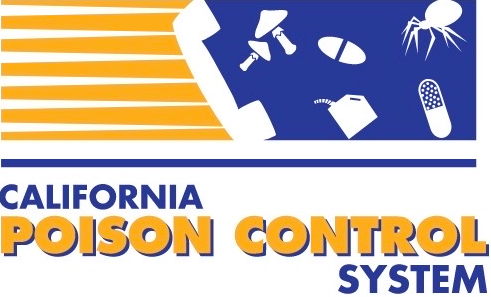By Daniel Lasoff, MD and Binh Ly, MD
Introduction
Amnesic shellfish Poisoning (ASP) is a potentially deadly illness caused by the toxin domoic acid. Domoic acid is produced by the diatom pseudo-nitzschia, an algae species, and shellfish that eat this algae bioaccumulate domoic acid. In 1987, there was a major outbreak of amnesic shellfish poisoning from the consumption of contaminated mussels resulting in over a hundred human cases with several deaths. Today there is strict monitoring of the ocean and commercial shellfish producers to ensure the risk of amnesic shellfish poisoning is minimized, but recreational fishing may place consumers at risk on a much smaller scale. It is thought, that Alfred Hitchcock may had taken his inspiration for the film, The Birds, from an August 1961 newspaper report of thousands of crazed seabirds with suspected poisoning and were slamming into houses, cars, and people.
Case presentation
A 45-year-old male with a history of hypertension presents to the emergency department with severe vomiting and diarrhea. He reports going on a fishing trip with two of his friends 2 days prior and caught a large number of oysters. Last evening, he cooked the oysters and ate approximately two dozen. He was asymptomatic until the morning of presentation to the emergency department (ED) when he developed significant gastrointestinal symptoms. While in the ED, his vitals were T 37.1?C, BP 98/56, HR 106, RR 12, and oxygen saturation of 100% on room air. The physical exam was unremarkable except for his vital sign abnormalities. His labs revealed WBC was 16,000 cells/mm3, a finger stick glucose of 125, and his electrolytes, creatinine, and BUN were all within normal limits. While in the emergency department over the next several hours, the patient became increasingly confused and disoriented until he developed a tonic clonic seizure. A lumbar puncture was performed and produced a negative gram stain and cell count.
Questions
- What are the scenarios that one should be concerned for amnesic shellfish poisoning?
- What can be done in the preparation of food contaminated with domoic acid to prevent the development of amnesic shellfish poisoning?
- Are there any lab tests or imaging studies that could help confirm the diagnosis?
- What treatment options or antidotes are available for domoic acid toxicity?
Epidemiology
There was a major outbreak of ASP that occurred in 1987 in Canada. At that time there were about 150 reported cases. During this outbreak, it appeared that the elderly were more susceptible to the toxin.
Since the last outbreak, authorities established a safety limit on domoic acid levels in shellfish. These are enforced in Canada, the United States, the European Union, New Zealand, and Australia. Since the establishment of safe levels, there have been no major outbreaks of domoic acid poisoning reported in humans.
Despite the effectiveness of shellfish monitoring programs in humans, the effects of algae blooms are still witnessed in ocean mammals. In 1998, the first case of domoic acid toxicity was diagnosed in a sea lion. That same year over 400 sea lions along California’s central coast died, and many more developed neurologic symptoms due to an algae bloom and resultant domoic acid toxicity. Since then, every year scores of sea lion deaths are attributed to amnestic shellfish poisoning. This past year, record numbers of sea lion pups have been found washed up on shore and stranded due to their mothers developing domoic acid toxicity.
The California Department of Health (CDPH), Oregon Department of Agriculture, and Washington Department of Fish and Wildlife all maintains routine monitoring programs along the coast for domoic acid. Mussels and other shellfish are continuously monitored, and commercial fishers are required to present samples of their catches regularly. When levels of domoic acid are high enough, quarantines and public warnings are issued. CDPH also conducts monthly seawater monitoring to assess for harmful algae blooms that can produce domoic acid. Since November 2015, CDPH has issued a health advisory for Dungeness and rock crab caught along portions of the California coastline:
Web-links to the shellfish monitoring program and seawater monitoring programs in California:
Pathophysiology
Domoic acid is an amino acid similar to kainic acid, another naturally occurring toxin and glutamate, the main excitatory signaling molecule in the central nervous system (CNS). Domoic acid has been found to be about 100 times as potent as glutamate in its affinity for glutamate receptors in the brain, particularly the a-amino-5-methyl-3-hydroxyisoxazolone-4-propionate (AMPA) and kainate subtypes. Activation of these AMPA and kainite receptors leads to a dangerously high level of CNS activity. This increased activity can precipitate seizures and damage to amygdala and hippocampus in the brain. While activation of these receptors typically lead to calcium influx and cell signaling, in excess the high calcium levels can be neurotoxic and signal cells in the CNS to undergo apoptosis. The hippocampus seems to be particularly at risk due to the high concentration of glutamate receptors there. This is likely the cause of the characteristic amnesia that develops after illness since the hippocampus plays a major role in the formation of memories.
The toxin itself is heat stable and will not denature when cooked or frozen. In humans, as little as 1.9mg/kg was seen to cause CNS toxicity which is quite concerning given some muscles have been found each to contain as much as 128mg of domoic acid per 100g of tissue.
Clinical manifestations
Patients with toxicity from domoic acid may present with headaches, abdominal pain, cramping, nausea, vomiting, and diarrhea within 30 minutes to 24 hours. With more severe toxicity, patients progress to develop permanent short-term memory loss, seizures, coma, or shock over the next 48 hours. Patients who presented with these symptoms after consuming non-commercially obtained seafood such as mussels, clams, or crabs should prompt clinicians to suspect ASP. Due to the similarities between domoic acid to kainic acid and glutamic acid, CNS toxicity is the major concern.
Diagnosis
Unfortunately, because there are no domoic acid laboratory assays that test humans for domoic acid currently available to hospitals, diagnosis should be made based on clinical manifestations and history. In the prior outbreak, patients tested within 48 hours of their ingestion had no detectable domoic acid suggesting that it is quickly cleared.
For patients tested in the prior outbreak, only one patient had an abnormal CT scan. Electroencephalograms (EEG) conducted were nonspecific in their findings, but some were positive for diffuse slowing or epileptiform activity. MRI testing was not readily available during the last outbreak, but it is possible that it may demonstrate abnormalities of the hippocampus amygdaloid nucleus.
The California Department of Public Health (CDPH) also maintains a regular survey monitoring crab’s, mussel’s, and oyster’s domoic acid levels, which can provide information to consumers and physicians regarding the safety of seafood.
If the diagnosis is suspected and a food sample is available, the sample should be frozen and CDPH should be contacted at (916)650-6500. Currently there are no private laboratories offering domoic acid testing.
Treatment
Patients presenting with dehydration from vomiting and diarrhea can be treated with supportive measures including intravenous fluids and anti-emetics. While there is no clear consensus for treatment for ASP, treatment should be directed at protecting from the potential neurotoxicity of domoic acid. Benzodiazepines can be used for treatment of seizures. If seizures are refractory to benzodiazepines, propofol or barbiturates may be utilized as an adjunct to therapy.
Hemodynamic instability may be treated with supportive measures and vasopressors if needed.
Studies done on animal models have shown that treatment with valproate and pyridoxine (vitamin B6) both attenuated the levels of domoic acid induced glutamate receptor activation, suggesting that there may be some use in the treatment of ASP. The use of pyridoxine is similar mechanistically to the treatment of an isoniazid poisoning in that it focuses on an excess of glutamate and using glutamate decarboxylase to detoxify glutamate by conversion to GABA. .
Discussion of case questions
- What are the scenarios that one should be concerned for amnesic shellfish poisoning?
Patients who report a history of recent non-commercial oyster, muscle, or crab consumption who present with gastrointestinal symptoms should raise suspicion for possible amnesic shellfish poisoning. Patients may move on to develop confusion, short-term memory loss, seizures, or coma. If possible, collateral history should be obtained from friends or family regarding possible recreational fishing. The CDPH provides regularly updated information regarding domoic acid levels in local sea life and algal blooms. - What can be done in the preparation of food contaminated with domoic acid to prevent the development of amnesic shellfish poisoning?
Unfortunately if the seafood is contaminated with domoic acid, it cannot be safely consumed. Neither cooking the food at high temperatures nor freezing it has significant effect on the toxin, as it seems to be stable in these conditions. - Are there any lab tests or imaging studies that could help confirm the diagnosis?
During the prior outbreak, all patients tested within 48 hours of their exposure did not have any detectable levels. It is suspected that this may be due to the body’s rapid clearance of domoic acid. Today, there are not any laboratory assay commercially available that measures domoic acid levels in humans. For the majority of patients, a head CT scan will be unremarkable. An EEG may show nonspecific slowing or epileptiform activity, but neither of these findings would be specific for the diagnosis which should be made on clinical grounds. - What treatment options or antidotes are available for domoic acid toxicity?
Unfortunately, there is no specific antidote for treatment of domoic acid toxicity. The main harm from domoic acid is that it is a much more potent analog of glutamate. Excess glutamate causes its harm through increased excitation leading to seizures and CNS apoptosis similar to isoniazid toxicity. Treatment should focus on supportive care such as airway protection, hemodynamic support, and treatment of seizures. As with isoniazid, benzodiazepines alone may not be sufficient to treat seizures, so propofol and barbiturates may be used as adjuncts. Studies have shown that there may be a benefit of treatment with pyridoxine or valproate but more investigation is needed.
Case resolution
Shortly after his arrival to the emergency department, the patient developed a generalized tonic clonic seizure and was intubated for airway protection. He had a prolonged hospital course characterized by difficult to control seizure activity, labile blood pressures, and unusual neurologic activity including myoclonic jerking, opsoclonus, and prolonged coma. After a 2 week ICU course, his mental status improved and he was extubated. However, he had a prolonged hospital stay due to recurrent seizures, difficulty with cognition and new onset memory problems. After several weeks as an inpatient, he was discharged to a rehabilitation facility with improvement of his seizures and cognition, but he had continued to have difficulty with anterograde amnesia.



